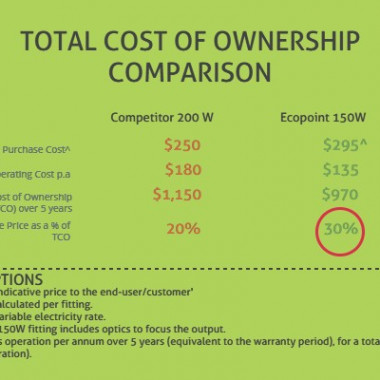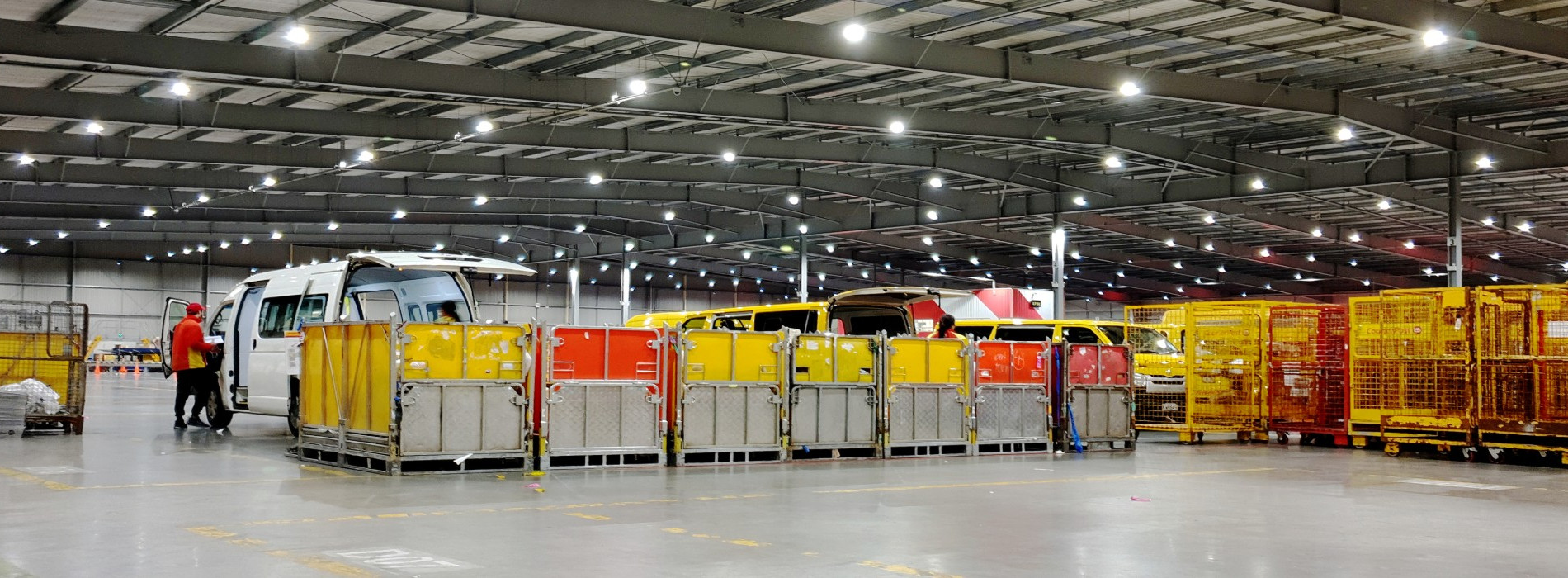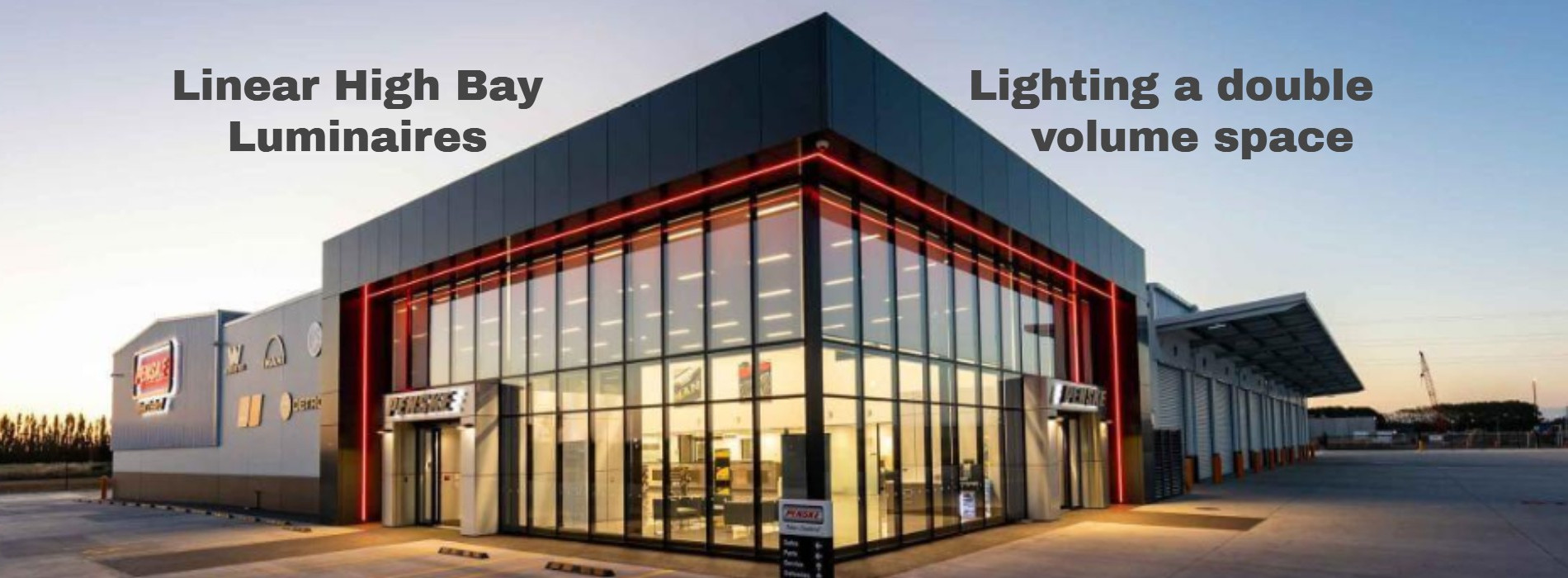
LOCATION, LOCATION, LOCATION
Consider the height of the fitting and the minimum amount of clearance needed to get the fitting as close to the task as possible. In the image to the left, dropping the fitting to the minimum clearance enables more light to be bought into the work zone, at no increased cost.
After careful placement of the luminaire, think about the minimum wattage you need to achieve the desired lighting results. Luminaire optics are crucial to effective and efficient lighting by putting light exactly where you need it. By not optimising your light distribution for the task at hand, you or your client could be paying for more wattage than you really need.
Choose the Right Optics
The optical renderings below show four of the optic variations available on Ecopoint High Bays, and clearly demonstrate how light can be focused. By focusing light and wasting less, you can often get away with a lower powered fitting.
Ecopoint supplies a wide range of optics not only for High Bays, but also Area Lights, Linear High Bays and Floodlights, giving you greater control over the lighting outcome in each space for your project. If you’re not considering optics, you’re probably not getting the best solution for your customers.
Which optics you use will depend on the space you are wanting to light and how it is used. Ecopoint can assist you with lighting design expertise to recommend the best specified High Bay for you or your client's needs. Click here for more detail on Ecopoint's lighting design services.

Get the best value for money
L Values
Product specifications give you the best indicator of quality and value for money. When considering any LED lighting, check out the L-Value, which is the best way to determine the longevity of the fitting. Ecopoint’s G2 High Bay offers a high specification solution and represents great value for money. In the graph below, we have compared an entry level 200W High Bay from a competitor and a 150W Ecopoint High Bay. After 30,000 hours, the competitor product will only be producing 80% of its original output, whereas the Ecopoint product will still be producing 95% of its original output. Because the Ecopoint luminaire maintains its light output for longer than the competitor's, you can get away with a lower wattage at the beginning, resulting in a lower total cost of ownership over the life of the fitting.

Calculating the Total Cost of Ownership

Don't just focus on the price!
Think about the performance of the fitting across its life by looking at total cost of ownership (TCO). TCO takes into account the purchase price and the cost to run the fitting over a nominal period.
In the table to the left, a 150W Ecopoint High Bay, using optics, is compared to a 200W low-end competitor product. The Ecopoint 5 year warranty period and 6,000 hours per annum (30,000 hours) is used as the nominal project life, to work out a total cost of ownership for that period. This enabled us to compare the economics on the two products. The Ecopoint fitting has a higher initial cost, but costs less to run over the lifetime of the fitting, making it a better economic choice, as well as a better choice on specification. The $180 difference in price between TCO's for the two products will also make a significant impact to the overall cost when purchasing a large number of fittings.

